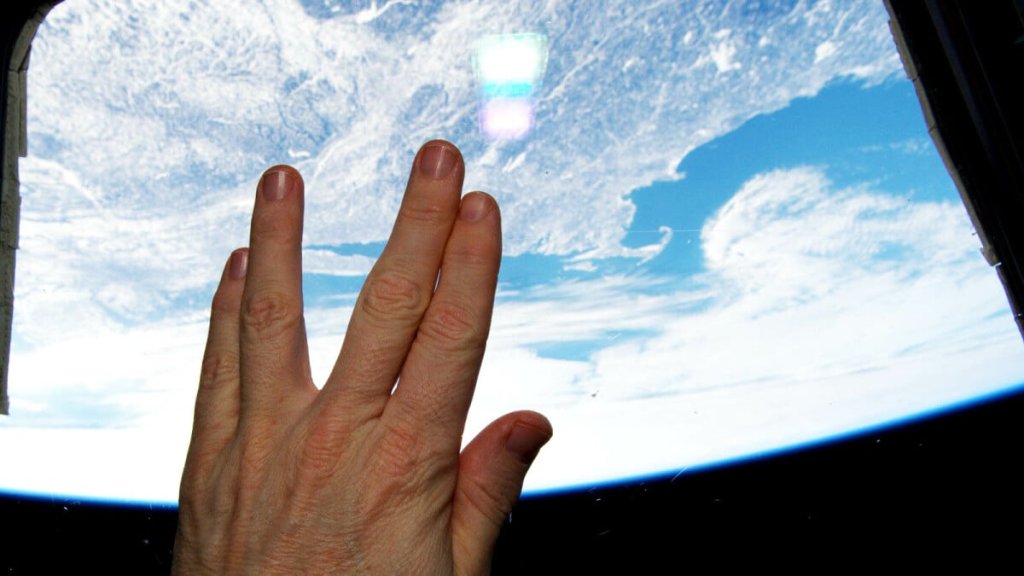
Sorry Trekkies: Bad news about the ‘real-life Planet Vulcan’ (Image Credit: Mashable)
Scientists Katherine Laliotis and Jennifer Burt didn’t set out to anger Trekkies with their new study of exoplanets in other solar systems.
It just so happens the data pointed them and the rest of their research team to a logical — most logical — conclusion, they said.
Five years ago, a paper published(Opens in a new tab) in Monthly Notices of the Royal Astronomical Society reported the existence of a planet orbiting a star about 16 light-years away. The star was 40 Eridani. That might not be a familiar name to everyone, but fans of the original Star Trek series know it as the host star of Spock’s fictional planet, Vulcan.
The trouble is, after a reanalysis, the new team found the discovery was likely a mistake. That’s right: They couldn’t just let Spock live long and prosper in a real world. They had to go and wipe out his home planet from existence.
“We apologize for that,” Burt told Mashable. “We’ll find other cool planets.”
Tweet may have been deleted
(opens in a new tab)
(Opens in a new tab)
Their research, accepted for publication(Opens in a new tab) in The Astronomical Journal, is intended to support NASA‘s future Habitable Worlds Observatory(Opens in a new tab), a mission that would use a space telescope to image Earth-like planets around relatively close stars. The project, decades in the making, aims to study these balmy worlds for signs of life. It’s slated to launch sometime in the 2040s.

Credit: CBS via Getty Images
The group pored over a huge public data release to look at exoplanets(Opens in a new tab) in the southern hemisphere. Their goal was to vet some of the best bets for the future telescope. In the process, though, they found a few previously documented exoplanets were likely errors.
One of those was 40 Eri b, the official name the original authors gave to Planet Vulcan. The new paper formally refutes it.
Planet Vulcan ‘discovered’ in 2018
Tweet may have been deleted
(opens in a new tab)
(Opens in a new tab)
In 2018, the original authors described the exoplanet(Opens in a new tab) as the closest super-Earth orbiting another sun-like star. It was said to be twice the size of Earth with a 42-day year within the star’s habitable zone. A super-Earth(Opens in a new tab) is a type of planet that is up to 10 times more massive than our blue marble but is lighter than ice giants like Neptune and Uranus.
Any rocky planet within this other Milky Way system would have a triple sunset(Opens in a new tab) because 40 Eridani actually includes three stars that circle each other.
Want more science and tech news delivered straight to your inbox? Sign up for Mashable’s Top Stories newsletter today.
“We’ll find other cool planets.”

Credit: University of Florida
Laliotis, Burt, and the rest of the new team used radial velocity(Opens in a new tab) to check solar systems for viable candidates. It’s a method of exoplanet detection that looks for subtle changes in the frequency of starlight as seen from Earth. The gravitational tug of an orbiting planet is thought to cause little wobbles in the light measurements.
Their analysis found features indicative of stellar activity(Opens in a new tab), not evidence of an exoplanet.
“They will look like planetary signals, but it’s actually not a planet,” said Laliotis, who was a NASA intern during the research and is now working on her doctorate at The Ohio State University. “It’s something like little spots on the surface of the star.”
It’s not known whether the original researchers who published the exoplanet discovery agree with the new analysis. Mashable’s attempts to reach the first two authors, affiliated with the University of Florida, weren’t successful.
Search for Earth-like exoplanet continues
Since word has spread of the new results, the scientists involved have gotten somewhat razzed by fans, including family members. Laliotis said her father proceeded to give her a lesson in Vulcanian “history,” explaining that the planet was headed for destruction, but that wasn’t supposed to happen for a couple more centuries.
Burt, an astrophysicist at NASA’s Jet Propulsion Laboratory, said her mother refused to read the article.
“My mom was a Trekkie,” she said. “She maintained this is why I’m an astronomer. She said, ‘I watched a lot of ‘Star Trek’ when I was pregnant with you, and so, clearly, that came through.'”

Credit: CBS via Getty Images
Despite their findings, the search for Spock’s home can continue, Laliotis said. Though they may not have a starship Enterprise to seek it out, more sensitive instruments and detection methods in the near future may make it possible to find another smaller exoplanet in that star system — perhaps one that is more Earth-like — to rename Vulcan.
After all, if 40 Eri b’s detection were correct, it would be much too hot for life as we know it.
“There is still hope that there might be a Vulcan there,” she said. “This actually is maybe promising that there might be a better Vulcan there.”





